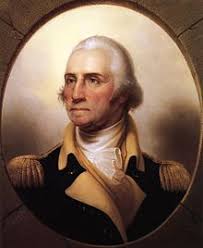Americans have a lot to be thankful for...
Despite budget woes, the global war on or from terrorists, the loss of jobs and industries, America has actually faced worse...much worse...
The American Revolution was an eight-year war that tore at the political, social, and economic fabric of the British colonies. From this bitter struggle emerged a new nation founded on liberties that came from an all-knowing and almighty creator who we call God. It is to the Creator, to Providence, to God, that this day is dedicated. The founders knew that their unlikely quest for liberty could not succeed without God's blessing. For that, they saw fit to give thanks, even before the outcome was clear...
 |
| The first, but not last, Thanksgiving |
Thanksgiving during the Revolution
Because they saw the cause as intrinsically connected to God, the Continental Congress appointed thanksgiving days each year and requested that each state celebrate it in its own way. By 1777, the war hung in the balance as Lord Howe bypassed "The Jerseys" with a strategic landing at Head of Elk, defeated Washington at the Battle of Brandywine, and soon occupied the American capital. The Congress had evacuated Philadelphia and transplanted itself to York, Pennsylvania.
 |
| The loss at Brandywine sealed Philadelphia's fate |
 |
| General Washington |
The founders had every reason to despair and turn their back on God but instead, they turned to Him in thanks. Besides, a great victory had been bequeathed to them when a large British invasion force surrendered at Saratoga, New York. Capitalizing on this, the commander in chief of the Continental Army, Lieutenant General George Washington, proclaimed a Thanksgiving in December 1777.
 |
| The British surrender at Saratoga |
A month earlier, the Continental Congress now in exile at York had issued the First National Proclamation of Thanksgiving in 1777. They called on Delegate Sam Adams to write the first draft, which Congress then adapted into the final version:
"FOR AS MUCH as it is the indispensable Duty of all Men to adore the superintending Providence of Almighty God; to acknowledge with Gratitude their Obligation to him for Benefits received, and to implore such farther Blessings as they stand in Need of: And it having pleased him in his abundant Mercy, not only to continue to us the innumerable Bounties of his common Providence; but also to smile upon us in the Prosecution of a just and necessary War, for the Defense and Establishment of our unalienable Rights and Liberties; particularly in that he hath been pleased, in so great a Measure, to prosper the Means used for the Support of our Troops, and to crown our Arms with most signal success:
It is therefore recommended to the legislative or executive Powers of these UNITED STATES to set apart THURSDAY, the eighteenth Day of December next, for SOLEMN THANKSGIVING and PRAISE: That at one Time and with one Voice, the good People may express the grateful Feelings of their Hearts, and consecrate themselves to the Service of their Divine Benefactor; and that, together with their sincere Acknowledgments and Offerings, they may join the penitent Confession of their manifold Sins, whereby they had forfeited every Favor; and their humble and earnest Supplication that it may please GOD through the Merits of JESUS CHRIST, mercifully to forgive and blot them out of Remembrance; That it may please him graciously to afford his Blessing on the Governments of these States respectively, and prosper the public Council of the whole: To inspire our Commanders, both by Land and Sea, and all under them, with that Wisdom and Fortitude which may render them fit Instruments, under the Providence of Almighty GOD, to secure for these United States, the greatest of all human Blessings, INDEPENDENCE and PEACE: That it may please him, to prosper the Trade and Manufactures of the People, and the Labor of the Husbandman, that our Land may yield its Increase: To take Schools and Seminaries of Education, so necessary for cultivating the Principles of true Liberty, Virtue and Piety, under his nurturing Hand; and to prosper the Means of Religion, for the promotion and enlargement of that Kingdom, which consisteth "in Righteousness, Peace and Joy in the Holy Ghost.
And it is further recommended, That servile Labor, and such Recreation, as, though at other Times innocent, may be unbecoming the Purpose of this Appointment, be omitted on so solemn an Occasion."
Original Thanksgiving Proclamation














